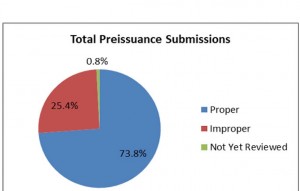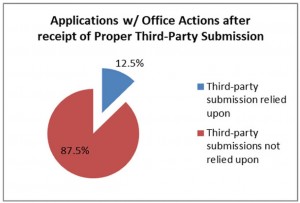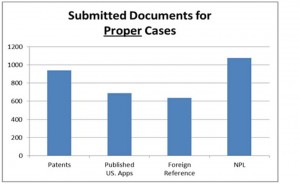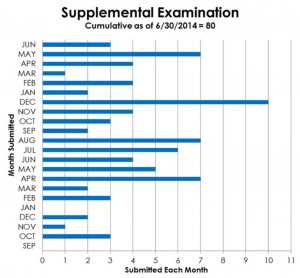So far the USPTO reports a total of only 1382 submissions, about 25% of which were deficient.
Of the 1044 “proper” submissions, how many resulted in an Office Action relying upon the submitted art? Just 12.5%. Given that some interested party went to the effort and expense of making a submission, the fact that only 1 out of 8 is relied upon suggests that the Examining Corps is ignoring these submissions.
Curious about the prior art the USPTO is ignoring? There are average of about 3.2 references per submission, which is likely due to the fact that there is no fee for a submission of three references or less. 28% of the submitted art are prior patents, 20% are prior published applications, 19% are foreign references, and 32% are non-patent literature.




